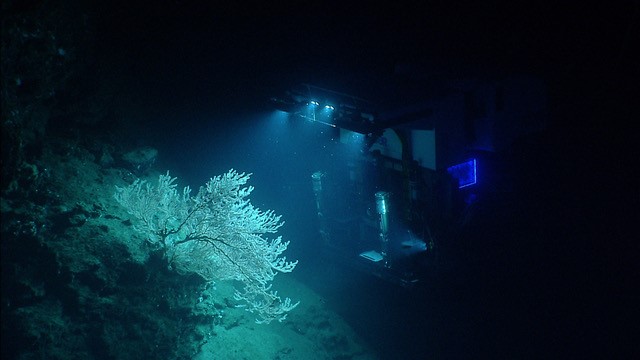[From Deep-Sea Life 11, available here]
Erik Cordes
Temple University, USA

the east coast of the US from the NOAA Ship Okeanos Explorer.
The DEEP SEARCH project will focus on the deep-water habitats along the U.S. Atlantic coast offshore of Virginia, North and South Carolina, and Georgia – an area that is currently under consideration for future energy development. Submarine canyons, cold seeps, lithoherms capped with corals, and coral-formed bioherms add considerable environmental complexity throughout the bathyal region. DEEP SEARCH includes a diverse team of scientists including U.S. Bureau of Energy Management contractors through TDI Brooks International, USGS scientists, and support from the NOAA Office of Ocean Exploration and Research. These investigators will seek to characterize faunal and habitat distributions, determine the processes that shape patterns in population and community structure, and determine the linkages between physical, chemical, and biological processes to better understand ecosystem function. Such interdisciplinary data sets are essential for predicting organism and ecosystem level responses to potential anthropogenic impacts and for assessing the severity of different impact types on sensitive deep-sea communities. Through this study, we will fill in the data gaps for poorly known deep-water ecosystems in order to help refine regional mitigation measures in the deep sea. The improved understanding of the habitats and communities in offshore areas of the Atlantic Large Marine Ecosystem will augment the capacity to predict the distribution of sensitive areas with respect to the potential development of energy and marine minerals managed by the Bureau of Ocean Energy Management and their concurrent mission to protect the environment.
